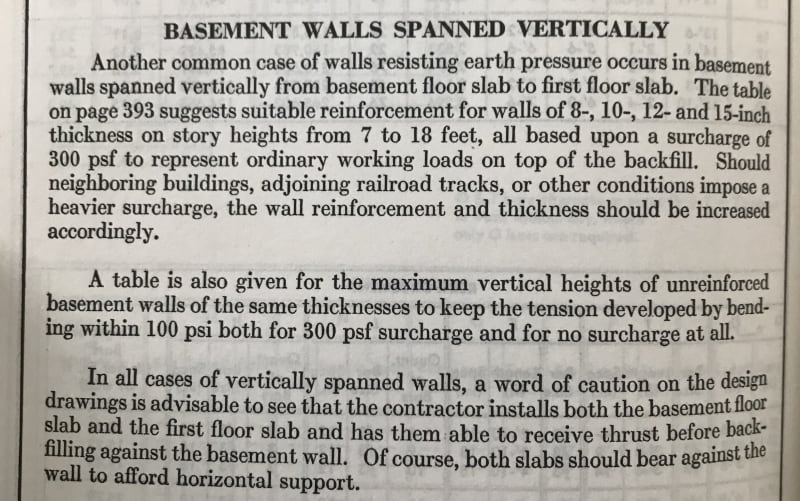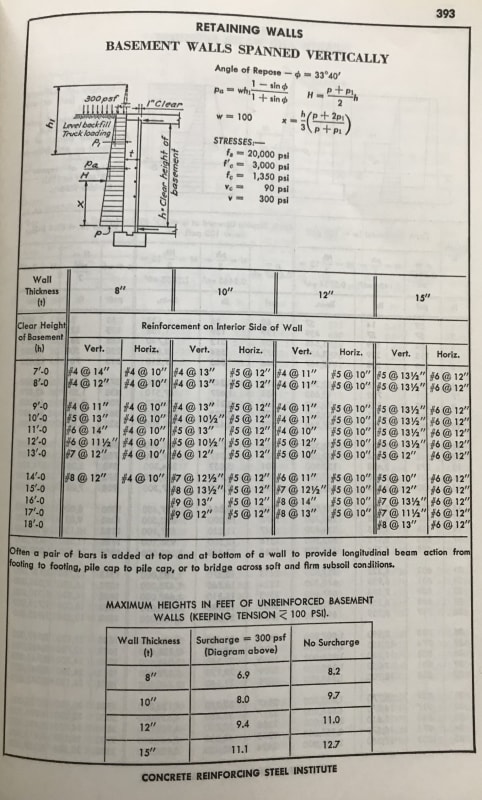GWoodPE said:
Please don't take my questioning as an attack. There's no need to be defensive.
I disagree. All meaningful debate is a cyclical dance of attack, defense, and counter attack. I prefer to revel in it rather than deny it.
GWoodPE said:
Thanks for keeping the discussion constructive and professional.
If your feelings were hurt, I apologize for that. I was trying to interject a little humor into a situation where it would probably have been best just to be direct. The direct version would have been this:
1) I find your questioning repetitive and cyclical.
2) My impression is that you are not really absorbing the answers previously given to your questions.
As one of your dance partners in this discussion, I'm frustrated by this.
GWoodPE said:
So what are the cracking issues that you are seeing?
KootK said:
1) When I practiced in WI, cracked basement walls were a thing. Almost a cliche really. If I'd cared to, I could have easily made a living out of just driving around looking at people's cracked basement walls.
2) In Alberta, where I currently practice, cracked basement walls are just as much of a thing as they were in WI.
3) On this forum, I have seen many, many examples of cracked basement walls all over the US and Canada in both concrete an masonry.
GWoodPE said:
Can they definitively be solved with more T&S reinforcing?
In my opinion, yes. I feel that most common concrete cracking issues would be improved by the addition of reinforcement. What particular cases are you thinking of that would not?
GWoodPE said:
How do you know what reinforcing is in the walls with cracking issues?
1) Sometimes I can look in the cracks and observe the absence of reinforcing.
2) Sometimes I can review the construction documents and observe the absence of reinforcing.
3) Sometime wall ares scanned to reveal the absence of reinforcing.
GWoodPE said:
Are there other issues that could be causing the cracking, high W/C ratio, backfilling without support
Of course. I mentioned couple of alternate causes previously, as repeated below. But then, so what? Do I have to prove that ALL cracking issues are related to a lack or reinforcing to validate my opinion that many cracking issues would be ameliorated by additional reinforcing?
KootK said:
- We all know that the wall to diaphragm connections are mostly worthless in residential and, therefore, so is much of the logic vertical spanning walls. It is a dangerous thing to not have some horizontal spanning capability.
- Most real world structural failures have a building envelope failure associated with them. As such, I'd still consider a big, purely vertical crack to be an invitation to future pain.
It seems to me that, when real issues crop up, they tend to be associated with things like frost and hydro-static pressure rather than -- or perhaps in addition to -- shrinkage cracking
GWoodPE said:
So are we talking about different issues? Issues that need to be solved by means other than additional horizontal reinforcing?
It's hard for me to say as I'm not really clear on what
your issue is at this point. Can you restate it for clarity such that I might respond to your question? My issue is really just this:
I prefer to see meaningful quantities of reinforcing in basement walls for a variety of reasons. And I do not like it when prescriptive code clauses, combined with market pressures, prevent me from seeing my preference put into practice
GWoodPE said:
If you are saying that 5% of houses are a potential problem, and most of those are associated with frost and hydro-static pressure, what percentage are we down to if we first ensure there is enough flexural reinforcement, and second make sure proper drainage is installed and maintained. And then maybe third, make sure the contractor is installing the reinforcing properly and using a proper concrete mix. Is there an acceptable percentage?
I'm not in possession of the statistical answers to those questions I'm afraid. My 5% number was just spit-balling. Regardless, my feeling is that the possibility of other construction deficiencies, such as inadequate drainage, is just another good reason to have more reinforcing. Stuff happens and nothing's perfect. So providing some strategic contingencies makes sense to me.
GWoodPE said:
Isn't that what we are trying to get to the bottom of? Does practice need to change?
Yes and yes in my opinion.
GWoodPE said:
Or it doesn't make a difference if he uses 2#5 T&B or 3 evenly spaced since anything less than ACI318 is inconsequential?
I, for one, have never said that the small amounts of rebar prescribed by IRC should omitted or that they offer no benefits. I simply feel that more reinforcing would yield more benefits.
GWoodPE said:
It SEEMS like that is what you are saying, its ACI318 Table 11.6.1 or bust.
That is not what I'm saying. Nor is it anything that I have said in this thread. You're putting words in my mouth.
GWoodPE said:
I'm legitimately trying to broaden my knowledge and in turn maybe others as well. Isn't that the purpose of this forum?
Yup. That said, motives here are not always as pure as one would hope. Sometimes arguments are had because folks:
1) simply like to argue or;
2) are not receptive to contrary opinions.
Everyone has an ego after all. The only questions are how large is that ego and how well is it managed.
HELP! I'd like your help with a thread that I was forced to move to the business issues section where it will surely be seen by next to nobody that matters to me:


